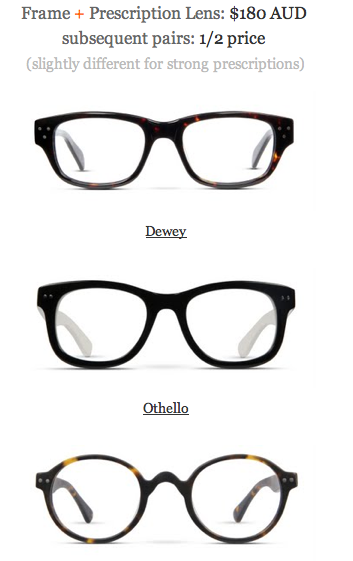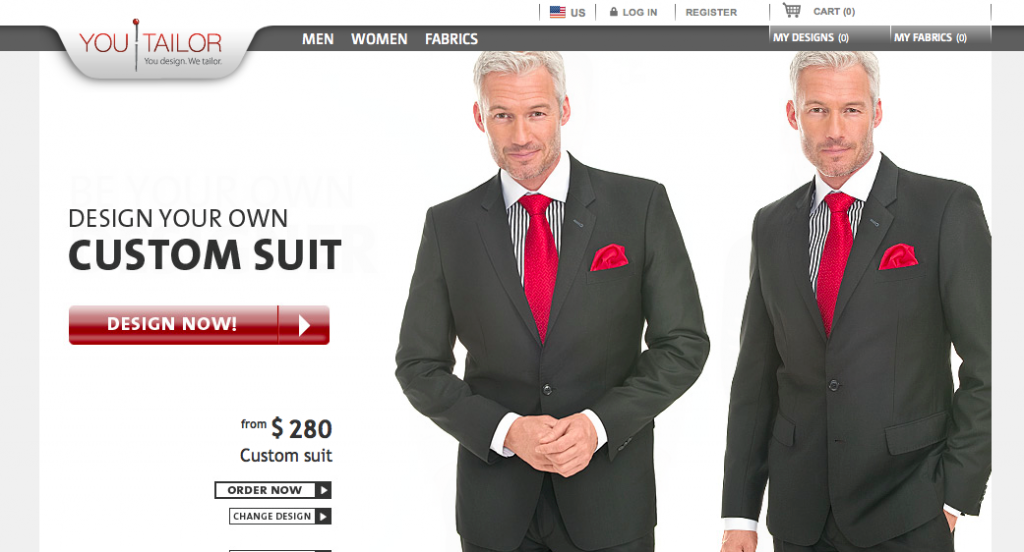E-commerce’s Changing Landscape | Customization
Retail therapy has long been a rich country’s rite of passage. Although, the way we indulge our retail therapy is changing as quickly as our smartphones. This Black Friday we reached record retail sales at traditional brick-and-mortar stores, yet the merging Cyber Monday is proving to be a fighting younger brother. Up 33% this year, according to the Washington Post, online commerce is trending upwards from $175 billion in 2007 to a projection of $335 billion in 2012 (Forrester Research).
As customers shift online, retailers have no choice, to not only follow suit, but to adapt to their changing demands. The rise of ecommerce giants EBay and Amazon.com has shone a light on a new path to consumerism. Or rather, nudged store-fronts to question their position. American behemoth Walmart is perhaps showing leadership in the shift with the development of Walmart Labs. Headed up by Venky Harinarayan and Anand Rajaraman (the founder’s of Kosmix), formerly of Amazon (their acquirer), the low income retailers are chasing their buyers online.
The online buyer is not so simple and neither is the changing American consumer. Just as we are summed up by the advertising methodologies of the 1950’s as unpredictable and irrational (The Economist, Sex and Advertising, 2011), not only are we both these traits, but also with the power of click-a-mouse comparison shopping we are perhaps pickier, more demanding and less ‘experience’ oriented over product features.
The warmly lit Gucci showroom, the smell of Macy’s at Christmas, the ma and pa customer experience are all under prioritized to the fast-paced price comparison, as well as products exactly suited to our specific tastes and desires, based on the utter speed of browsing online. A retail experience was once a finely crafted mesh of brand and experience. Advertising theorist and Viennese psychologist, Ernest Dichter, made famous for the emotional driven advertising age of the 1940’s and 50’s called this “motivational research”, as written by December, 2011’s The Economist, “if shopping was an emotional minefield, then strategic marketing could be a gold mine for companies.” Rather, the online store is a speed machine built not on being soothed into what we need, but rather on the features and use of the product on it’s own. It is an age that Dichter would never be dealt with in his theory of mastering the consumer.
The experience of purchase by branding is shifting in the sense that the call to action is different. Some of the old theories of Dichter still apply as he stated “the ability to express oneself through shopping was a matter of great importance,” as he understood the emotional experience of the consumer yet he did not foresee the bypass of retail experience which the internet has made possible. Instant comparison gives us choice in regards to price and function rather than emotion and experience.
Although, America is littered by finely crafted brand images and saturated by messages to create this. But, with the power given to the consumer created by online retail merchants, consumer behavior shifts. Consumers demand an exact product suited to our exact needs and this time we do not want to be told what this is.
Personalized customizable online shopping is a rising trend in technology’s hot hand. I recently put my finger on the pulse meeting Australia’s Shoesofprey.com. Shoesofprey.com have built an easy-to-use online software to build your own shoe, order, and have shipped to your door for any occasion or mood. Similarly, Shoedazzle.com, one small move away from complete customization, makes a dashboard of choice based on particular preferences and requests. A customized browse (or soft sell) rather than a customized product, yet still a customized experience. Shoesofprey.com also runs the same business model in the glasses business with their off shoot sneakingduck.com. And to go with your new glasses and shoes you can hop on youtailor.com and literally create your own matching outfit, making us all designers.
From dress shirts (shirtsmyway.com & propercloth.com, to name a few more) to jewelry (gemkitty.com), the internet has already birthed customization of ‘retail therapy’s’ top selling ‘mall’ products. Nicholas Marx of Bespokable.com is rumored to be cooking up an entire marketplace for all sorts of different types of personally created products from online (user-friendly) software. Even the golf industry has joined with Lindgolf.com customizable clubs and on the flip side several chocolatiers have started the same. Remember when we thought it was revolutionary to choose your own M&M’s for themed parties or design your own Vans and Nike shoes online? It has gone beyond that as the online customer exerts their power.
This being said, I feel the luxury market is an especially warm inviting stomping grounds for this type of online customizable consumerism. The luxury shopper is picky, not threatened by price based on mass distribution, and pleased by the thought of personalization. A luxury buyer shops in different catalogs, different stores, and usually is characterized by unique and demanding tastes. This is certainly something online software could approach. Although, the luxury consumer has more dependency on experience and sometimes less of a demand to stand out since they have so much alternative choice from the masses at their fingertips. At the same time, it would not be surprising to see a customizable section on the Tiffany’s website. Brands not built by designer name and creditability perhaps have an open window to quickly adapt the changing online consumer demand.
 Yet, the old model of branding won’t die without a fight. As the consumer still needs a nudge towards what they may need, increasing online advertising into 13.7 percent of all American advertising in 2011 (Rao, Leena, Techcrunch). This being said, there is no reason a customizable product can’t still have a ‘label’ or brand image. Shoesofprey.com’s founders Michael and Mike, formerly of Google, feel they can still create a branded label that gives them positioning while still offering a completely customizable product. After all, it is still an experience, right?
Yet, the old model of branding won’t die without a fight. As the consumer still needs a nudge towards what they may need, increasing online advertising into 13.7 percent of all American advertising in 2011 (Rao, Leena, Techcrunch). This being said, there is no reason a customizable product can’t still have a ‘label’ or brand image. Shoesofprey.com’s founders Michael and Mike, formerly of Google, feel they can still create a branded label that gives them positioning while still offering a completely customizable product. After all, it is still an experience, right?
Former marketing exec of Zappos.com (who chooses to remain anonymous due to the term ‘former’), in fact, feels the opposite. He is sick of the giant brand tags and littered labels across product and feels he represents a critical mass of the American consumer. “We want to feel unique in our choices” and the shift in purchasing landscape has lent its vast reaching hand to doing exactly that. He rather feels large branded labels of similar products are dead in the water with the opening for unique choice made exactly for you and only you.
But the growth of customizable ecommerce is slow moving. It seems only a handful of tech companies have dared to embark on this new consumer shift and the marketplace seems wary. We love choice, but we are always plagued by the paradox of choice (in other words, too much choice). In my research, I could only find a handful of companies opening the doors to complete consumer customization of retail and few journalistic accounts about this space. It seems we are just now grasping online retail. The timed-sales model of Gilt Groupe and Haute Look alike, has gained popularity in the last few years and perhaps the forefront of a movement to the web. But with a shift in the way we buy, comes a shift in the way we are moved to buy, comes a shift in our tastes and demands, comes a shift in the exact neuron that fires ‘buy’ in our impulsive consumer brains. If we are asked to create rather than passively purchase will we continue down the path of a consumer economy?










